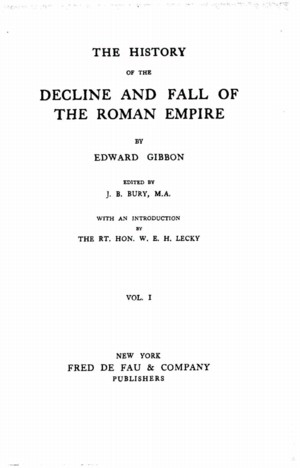Who is considered the first modern historian of ancient Rome?
 October 15, 1764 — Today, Edward Gibbon observed a group of friars singing in the ruined Temple of Jupiter in Rome, which inspired him to begin work on “The History of the Decline and Fall of the Roman Empire.”
October 15, 1764 — Today, Edward Gibbon observed a group of friars singing in the ruined Temple of Jupiter in Rome, which inspired him to begin work on “The History of the Decline and Fall of the Roman Empire.”
Here’s why: Gibbon saw the Praetorian Guard as the primary catalyst of the empire’s initial decay and eventual collapse. It was a seed planted by Augustus when the empire was established. His writings cited repeated examples of the guard abusing their power with calamitous results, including imperial assassination and demands for increased pay.
About the book: It traces the trajectory of Western civilization (as well as the Islamic and Mongolian conquests) from the height of the Roman Empire to the fall of Byzantium. It was published in six volumes. Volume I was published in 1776 and went through six printings. Volumes II and III were published in 1781; volumes IV, V, and VI in 1788–89.
The original volumes were published in quarto sections, a common publishing practice of the time. The work covers the history of the Roman Empire, Europe, and the Catholic Church from 98 to 1590 and discusses the decline of the Roman Empire in the East and West. Because of its relative objectivity and heavy use of primary sources, unusual at the time, its methodology became a model for later historians. This led to Gibbon being called the first modern historian of ancient Rome.
Sources
Words of Wisdom
As long as mankind shall continue to bestow more liberal applause on their destroyers than on their benefactors, the thirst of military glory will ever be the vice of the most exalted characters.





